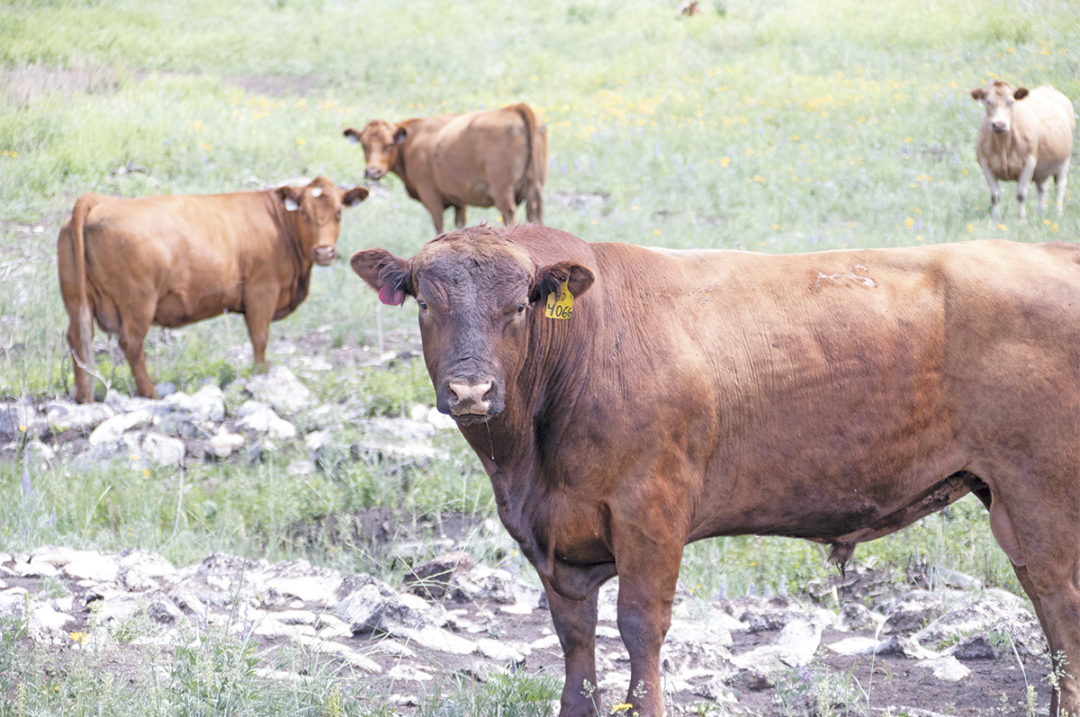In the past, the process of acquiring a new herd bull likely included the scouring of a local newspaper, visiting a neighbor or attending a nearby auction sale. The bill of sale’s fine print may or may not have detailed the requirements and results of a semen test.
Dan Shike, professor in animal sciences at the University of Illinois, says the growth of available information and tools has instigated significant changes to this long-entrenched practice. In addition to visual indicators, future performance predictions using expected progeny differences (EPDs), selection indexes and genetic components are becoming a core fixture in today’s bull-buying endeavors. In his view, the genetic prediction of economically relevant traits, even if lowly heritable, is extremely important.
Assess goals in relation to herd size
“It’s essential to know the status of an operation when considering which tools to use,” Shike says. “Especially commercial producers need to take a step back and assess their marketing goals and current benchmarks before deciding where to apply the most pressure.”
Should they add more growth, carcass, fertility or something else? These questions must be answered to achieve the best fit for local environments and goals.
A critical issue influencing bull evaluation is herd size. Those small enough to require only a single bull will have different needs than those requiring several. Single sires would normally be asked to cover heifers and a mix of more mature females. It’s likely some heifers are kept as replacements, while other calves are expected to sell with acceptable weights at weaning.
“These ‘do-it-all’ bulls need to feature enough calving ease, growth and even carcass quality to reach reasonable levels of profitability,” Shike says. “Larger operations can specify individuals for optimal levels of these distinct traits.”
Troy Rowan, assistant professor and extension specialist of beef genetics at the University of Tennessee’s Institute of Agriculture, agrees and adds, “The ‘do-everything’ bull is expensive and a challenge to find. Everyone has a budget, and those buying in bulk can be more targeted with some for heifers, others for maternal cows to retain replacements, plus more terminal sires for growth, performance and carcass quality. It’s important to prioritize the right traits to fit our needs and operation size.”
Avoid data overload while adding confidence
Rowan explains that data overload is something to continuously address. Currently, some associations are collecting and reporting data on more than 25 different traits.
“It’s a lot to wrap our head around,” he says. “Not only trying to figure out which are most vital to our profitability, but each trait carries varying amounts of importance while being genetically correlated to others. I think our best tools for overcoming information overload are the economic selection indexes that allow us to evaluate traits in tandem but target a single value purely focused on the profitability of a bull’s offspring.”
Rowan says the largest technological leap of the last two decades is the widespread use of genomics. In the past, commercial producers made purchases with limited information and minimal data. Genomics and genetic testing have instilled more confidence as large amounts of accurate data become available.
“The rule of thumb is we gain a calf crop’s worth of phenotypic information and accuracy when we use a genomic test on a young unproven bull,” he says. “Integrating genomic evaluations to help reduce the risk associated with these large investments creates a major technological advancement.”
He explains that while prediction genomics have added confidence, it hasn’t increased the complexity of the EPD equation. Progressive owners are demanding genomic testing on the bulls they’re buying, and since testing costs have decreased, the extra information and confidence gained in associated EPDs are worth it many times over.
Clint Rusk, executive vice president of American-International Charolais Association, agrees, adding that when asked, most producers welcome numbers, data and information to help reduce their risks, plus more and more are now expecting sellers to have them.
He says over the past two years, testing in the Charolais Association has increased approximately 20% each year.
“Cattlemen are seeing the value and rewards for providing this information,” says Rusk. “But even with this value, most buyers still walk through the pens or look at videos ahead of time. They still want a bull that’s appealing to the eye.”
Rusk remembers asking his granddad about his process of selecting a new bull. The answer included a visit to a breeder close enough that he could return home on sale day. He wanted to like how the bull looked, and if possible, he’d view the mother. Everything was based on visual appraisal without extra numbers.
He says an increasing number of association members are now trusting DNA samples and genomic evaluations of desired traits. Some still want to see actual birth, weaning and yearling weights, while others prioritize scrotal circumference and semen samples in relation to fertility and puberty age.
“No one wants to spend thousands of dollars only to find out a bull isn’t fertile,” Rusk says. “Increased testing helps reduce the risk.”
Videos and visual appraisal
With many of today’s sales occurring via video without animals ever seeing a sale ring, EPDs and related data before an auction become crucial. While video quality has improved, Rusk still finds value in firsthand viewing.
“Like building a house, the foundation must be solid and structurally sound,” he says. “Even with high-quality video, there’s no substitute for getting in the pen and watching them walk.”
Shike also emphasizes the importance of a visual appraisal of traits not represented by EPDs.
“Study the feet, legs and basic conformation,” he stresses. “It’s not as easy to see on video, even though most do a fantastic job of photographing and videoing.”
Rowan believes a complete breeding soundness exam, including a semen test, still adds extensive value. Cattle producers place a lot of pressure on their herd sires to deliver a calf crop, and if one isn’t pulling his weight it has downstream effects, including shifting calving distribution and losing out on pregnancies.
“It’s a small investment to help ensure a bull brings the genetic potential invested in,” Rowan says. “Without these procedures, we’re leaving a lot up to chance.”










